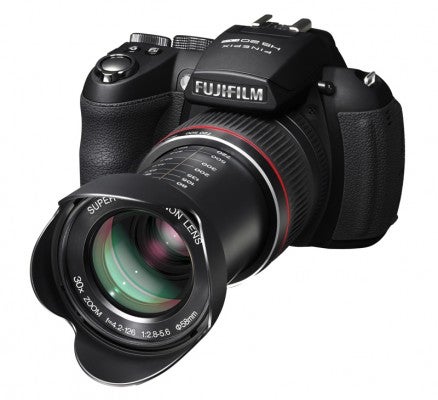The Fuji HS20 brings Fujifilm's EXR processing technology to the superzoom fold. But is this latest 30x optical zoom beast good enough to bring the superzoom market forward? The What Digital Camera Fujifilm FinePix HS20 EXR review takes a look...
Fujifilm FinePix HS20 EXR Review
Image Quality
Fujifilm FinePix HS20 EXR review – Image Quality
Squeezing 16MP onto a relatively small sensor has very little benefit and, at full resolution, the HS20’s images are a step backwards from the previous HS10.
Pop the camera into the ‘EXR’ mode, however, or step the output size down to 8MP (or less) and it’s a bit of a different story: by using the full span of the sensor for an image of half the resolution, the EXR processing can garner the fullest dynamic range, colour detail and (in effect) twice the light by using double the pixels. The theory goes that this improves image quality significantly – but the HS20’s results still aren’t as staggering as we had hoped.
No doubt the EXR setting’s results (at 8MP or less only) are sharper, but the processing still produces too much smearing that lacks the full definition it ought to. Saying that quality is rather like that of other compact cameras with a similar sensor size. DSLR-beating this isn’t: and while these words may sound harsh, it’s in order to balance up against peoples’ high expectations.
The lowest ISO 100-200 settings produce reasonable images, but the mosaic of JPEG processing artifacts, lack of smooth gradients and smeared edging will render more far-away subjects as lacking in detail and quality.
From ISO 400-800 this becomes more pronounced, muting overall quality yet more. The higher ISO settings will have limited use for critical work, and the top-end ISO 12,800 can only be shot at 4MP (though it’s so riddled with image noise it’s not worth being included).
Given that the HS20 has been marketed as a 16MP camera, most users are likely to use it at the highest (and default) resolution setting. Fuji’s not been able to explain particularly well through its promotion and marketing that this isn’t always its most ideal setting – if the camera was destined to be EXR-output only then it should have been marketed as an 8MP camera rather than the 16MP that it is. It seems ‘big numbers’ are still delivering in the sell when this should be of little concern.
In terms of exposure the HS20 avoided bright skies or back-lit windows from dominating a picture, ensuring main subjects remained exposed. The inclusion of a Dynamic Range option (100, 200 or 400%) extends to ‘pushing’ shadow areas to bring out extra detail.
Shift over to ‘Spot’ metering, however, and the actual spot area is rather large by comparison to standard and may require additional fine tuning or manual exposure to acquire the exact results desired.
The bottom line is that the HS20’s images are perfectly good for day-to-day, non-critical shots in good light. In the 8MP EXR mode the shots still aren’t going to blow your socks off (a shame given that the Fuji X100 produced some of the most staggering images from an APS-C sized sensor we’ve seen), but it’s a marked improvement that is a must in use to get this most out of this kit.







